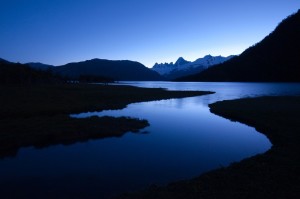Whether you are working for a sustainable future, striving to raise healthy kids, or contributing in another way, there are moments when you take a step back and reflect, “Wow, this is what it’s all about.”
I was so proud when I learned about the monumental victory Chilean environmentalists won last month in Patagonia.
For the past eight years, Chileans have been fighting against a plan by an Italian-Chilean energy conglomerate to build five dams in the Aysén region of Patagonia.
If you’ve been to Patagonia, you’re probably already appalled by the idea. If you haven’t: Patagonia is one of the most gorgeous places on Earth. Jagged mountains, verdant valleys; it is home to diverse species, including humans. Many of the plants and animals are endangered. Check out these amazing photos.
The massive hydroelectric project, HidroAysén, would have dammed the Baker and Pascua rivers, flooded 15,000 acres of ranches and natural reserves, and required building 1,200 miles of electric lines to transport the energy through private land and pristine, protected areas to the copper mines in the North.

Initially, most of the public was in favor of the plan. People saw it as something that had to happen in order for Chile to move forward. And so the environmentalists began the long slow work of transforming the public mind.
Many, many organizations were involved: local, national, and international. Global Greengrants is proud to have played an important role in the victory. Over the past eight years, we gave more than $700,000 to Chilean organizations working on the issue, through our Green Grantmaking program, as well as through Donor Advised Funds.
One of our grantees, Peter Hartmann, director of Aisén Filial of the Comité Nacional Pro Defensa de La Fauna y Flora, recently told us that environmental leaders knew they needed to fight for something positive. They didn’t believe they could win a struggle against dams, or against unsustainable development—they needed to united people around a positive vision for the future. Read our Q&A with Peter here.
And so they drew on a concept they had been developing for two decades: Aysén as a “Reserve of Life.” What this means to them is that all life is valued in Aysén—plants, animals, and human livelihoods. It means that sustainable livelihoods are possible, like organic ranching, responsible fisheries, and ecotourism.
Over the next eight years, environmentalists engaged in a massive communications campaign around this vision. They worked with television, radio, and print media. They held public meetings and festivals and conferences. They staged massive marches and protests.
It worked. In 2007, only 38 percent of the public opposed the project. By 2011, 74 percent opposed it.
And on June 10, 2014, the government scrapped the project. This is the biggest environmental victory Chile has ever seen. Hartmann says it has transformed the Chilean environmental movement and the country.
Hartmann says that Global Greengrants funding was crucial to organizations large and small:
“Global Greengrants funded small, local groups that were just starting up and that were important to the campaign. And, when the financial crisis hit, and the larger organizations saw their funding cut in half, some of them turned to Global Greengrants to save them. Global Greengrants was a lifesaver that helped keep them and the campaign afloat.”
So please, take a moment to reflect with me. This is what it’s all about. Thank you for partnering with Global Greengrants and the people of Patagonia to create a sustainable future.
Global Greengrants’ Green Grantmaking in Patagonia
Since 2006, Global Greengrants, in collaboration with our Southern Cone Advisory Board, Donor Advised Fund supporters, and International Rivers, has made more than 35 grants worth more than $700,000 to communities fighting the HidroAysén dam project.
Local leaders and communities have used Greengrants to:
- Study the dams’ potential impact.
- Travel the country educating local people about the dams devastating effects.
- Cover the costs of a regionwide cavalcade to raise awareness.
- Create a tourist route featuring local businesses opposing the dams.
- Produce documentary films about the dams’ destructive impact on people, animals, and nature.
- Hire journalists to generate media coverage of the dam opposition.
